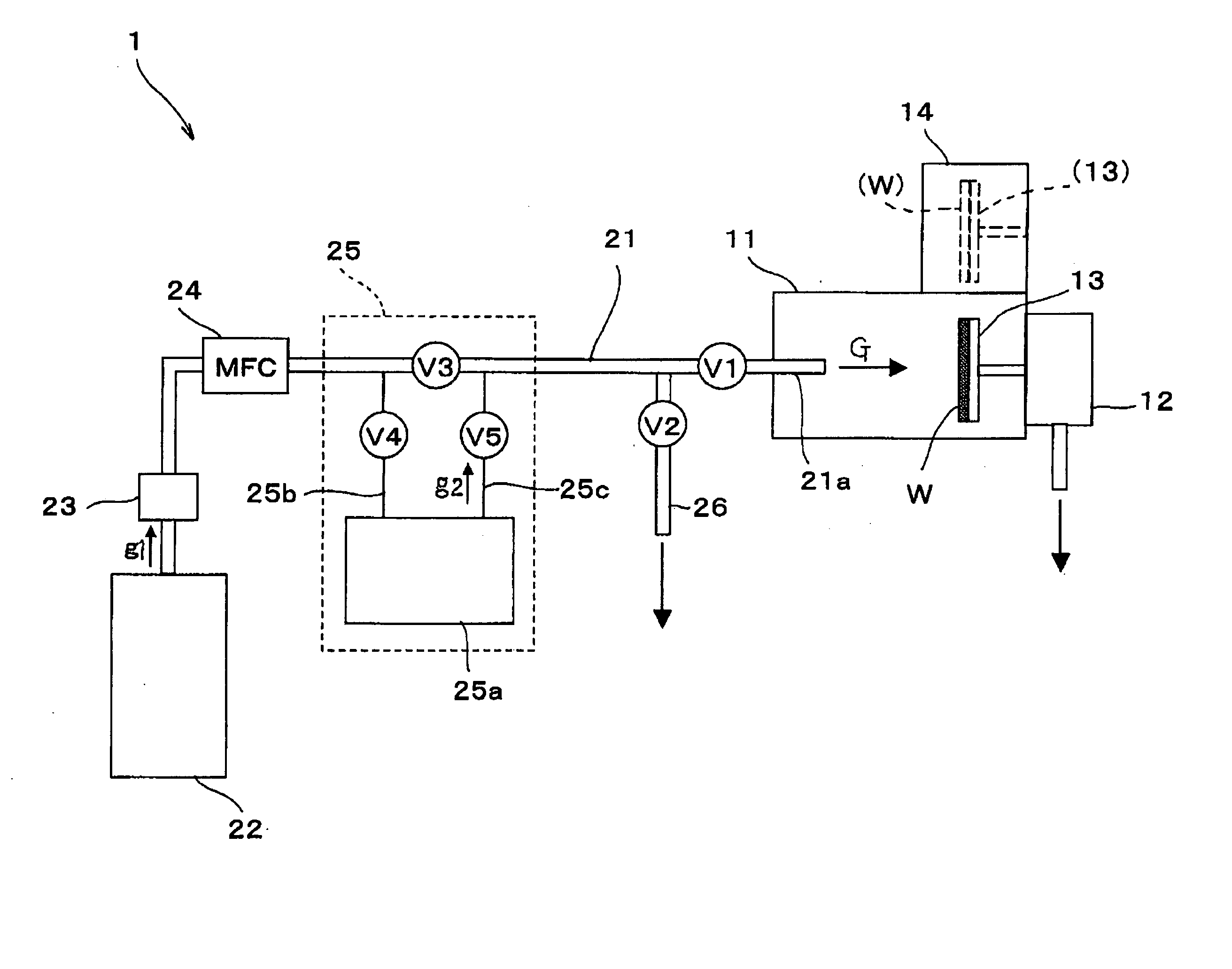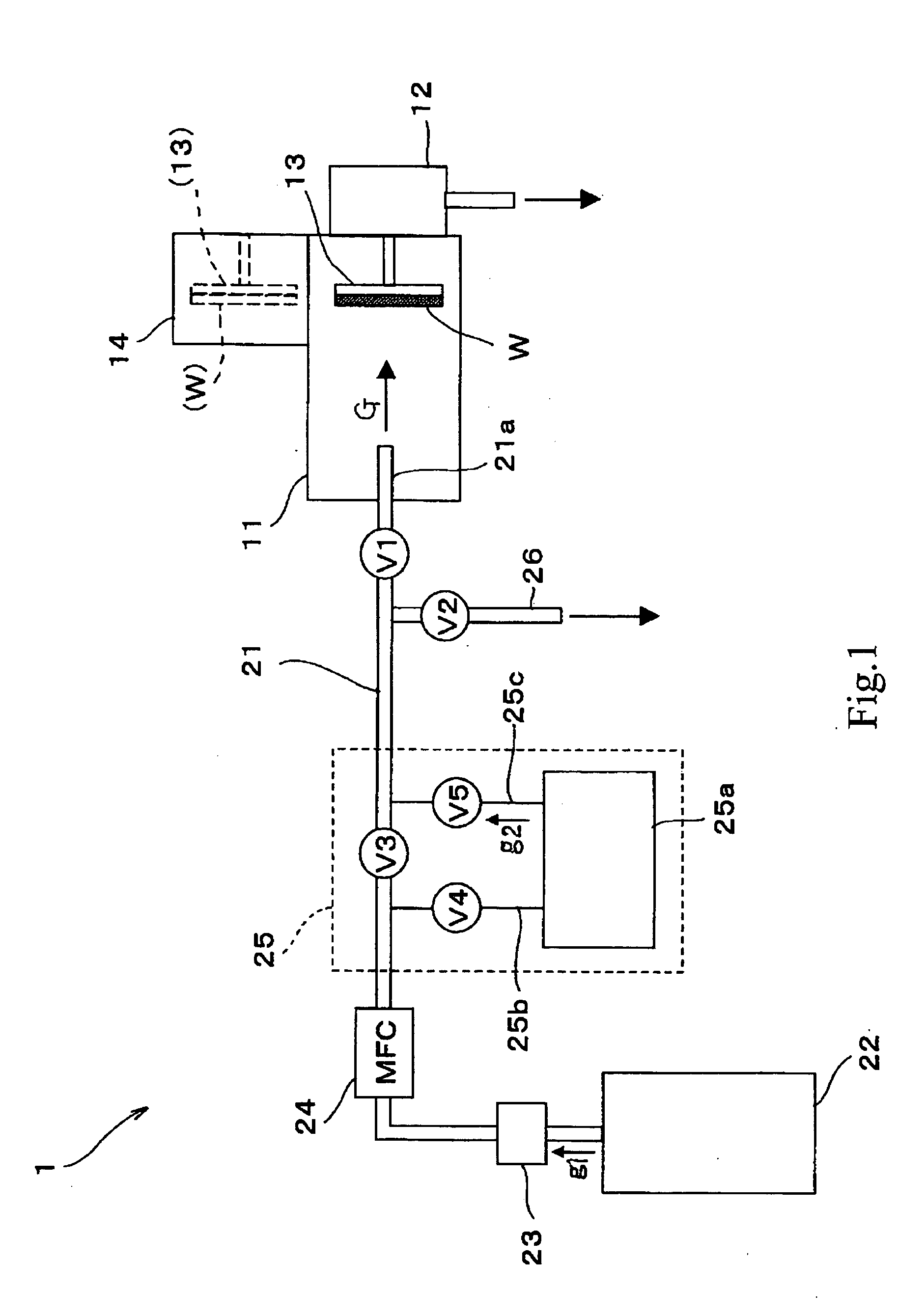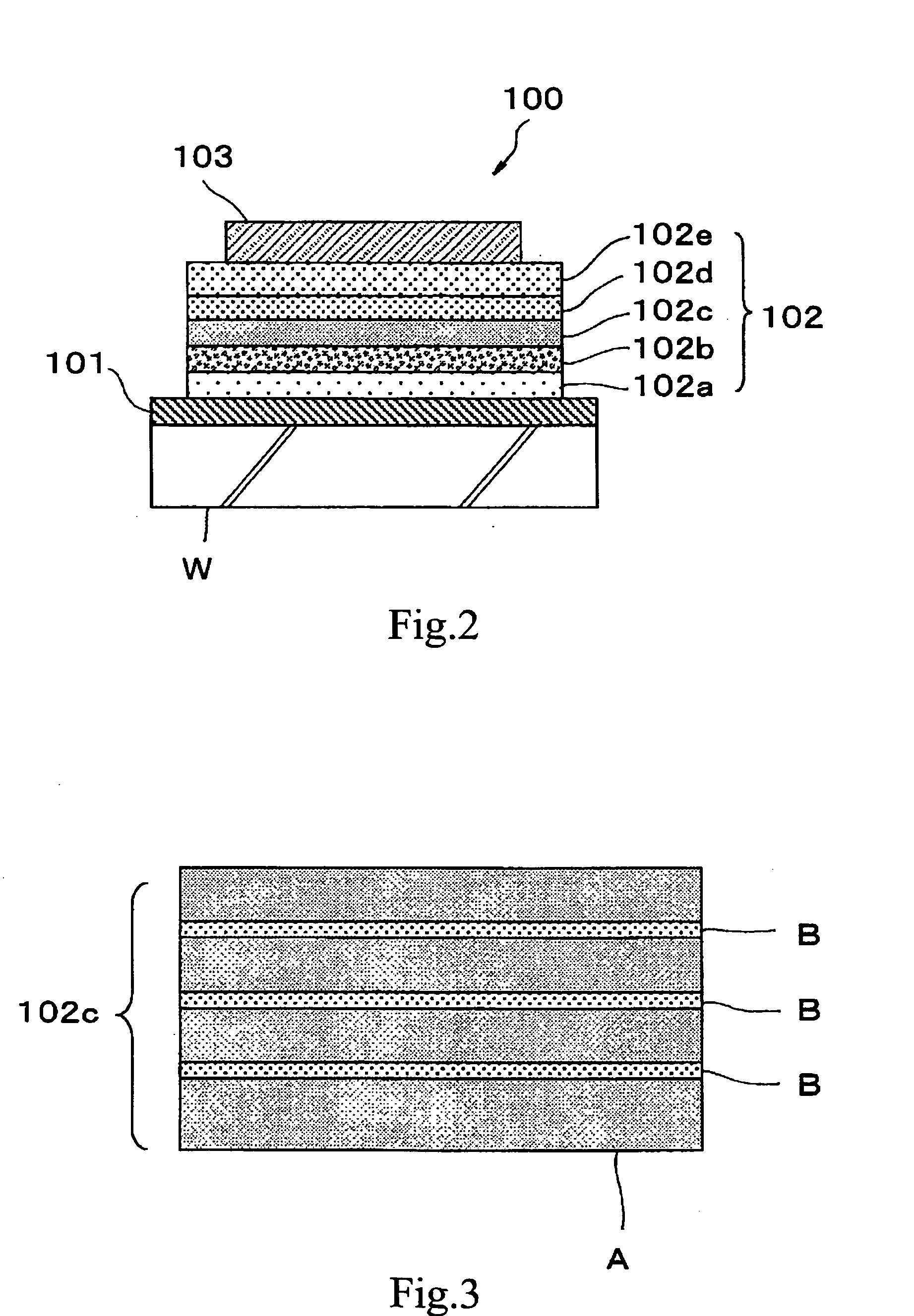Method for forming organic thin film
- Summary
- Abstract
- Description
- Claims
- Application Information
AI Technical Summary
Benefits of technology
Problems solved by technology
Method used
Image
Examples
Embodiment Construction
[0016] The invention will be described in more detail with reference to the accompanying drawings.
[Film-forming Apparatus]
[0017]FIG. 1 schematically shows an example of the film-forming apparatus to form organic thin films according to the embodiment of the present invention. The film-forming apparatus 1 is equipped with a reaction chamber 11 to accommodate a substrate W on which organic thin films are to be formed.
[0018] The reaction chamber 11 is equipped with an exhaust system 12, which keeps the reaction chamber 11 at a prescribed pressure. The exhaust system 12 is so constructed as to pass the exhaust gas through a trap (not shown) that catches residual materials and discharges only inert gas, such as nitrogen (explained later), through a scrubber.
[0019] The reaction chamber 11 is provided with a substrate support 13 to hold a substrate W. It is also provided with a temperature controlling mechanism that keeps the supported substrate W at a prescribed temperature. It is als...
PUM
| Property | Measurement | Unit |
|---|---|---|
| Composition | aaaaa | aaaaa |
Abstract
Description
Claims
Application Information
 Login to View More
Login to View More - R&D
- Intellectual Property
- Life Sciences
- Materials
- Tech Scout
- Unparalleled Data Quality
- Higher Quality Content
- 60% Fewer Hallucinations
Browse by: Latest US Patents, China's latest patents, Technical Efficacy Thesaurus, Application Domain, Technology Topic, Popular Technical Reports.
© 2025 PatSnap. All rights reserved.Legal|Privacy policy|Modern Slavery Act Transparency Statement|Sitemap|About US| Contact US: help@patsnap.com



